#Wildlife Health
Text
Lismore Biodiversity News - Species Watch
During a recent field excursion, Environmental Strategies (ES) team members encountered a solitary Grey-Headed Flying Fox displaying concerning behaviours, including resting low in a tree away from its camp.
Supporting Grey-Headed Flying Foxes in Critical Times
During a recent field excursion, Environmental Strategies (ES) team members encountered a solitary Grey-Headed Flying Fox displaying concerning behaviours, including resting low in a tree away from its camp. Recognising these signs of potential illness, the team promptly contacted WIRES for guidance.
Such behaviours, including remaining in…

View On WordPress
#Australian Bat Lyssavirus#Bat-Friendly Practices#Community engagement#Conservation Education#Conservation Strategies#Ecosystem Stewardship#Environmental Awareness#Flying Fox Behavior#Grey-Headed Flying Fox#Habitat Preservation#Lismore Citiy Council#Lismore NSW#Native Nectar Sources#Rainforest Pollinators#Species Conservation#Starvation Prevention#Vulnerable Species#Wildlife Emergency Response#Wildlife Health#Wildlife Protection#Wildlife Rehabilitation#WIRES Hotline
0 notes
Text
Tagovailoa, Zaporizhzhia make list of most mangled words
Tagovailoa, Zaporizhzhia make list of most mangled words
BOSTON — “Miami Dolphins quarterback Tua Tagovailoa explained the significance of the Chicxulub impact crater to actor Domhnall Gleeson over a drink of negroni sbagliato in the Ukrainian city of Zaporizhzhia,” is the kind of sentence that just might tie your tongue up in knots.
It contains five examples from this year’s list of the most mispronounced words released Wednesday by The Captioning…
View On WordPress
#Animal health#Business#Climate and environment#Electric power genera#Electric utilities#Energy industry#Environment#Government and politics#Health#International agreements#International relations#Protocols#Utilities#Wildlife#Wildlife health
0 notes
Text
Good News - May 15-21
Like these weekly compilations? Support me on Ko-fi! Also, if you tip me on Ko-fi, at the end of the month I'll send you a link to all of the articles I found but didn't use each week - almost double the content!
1. Translocation of 2,000 rhinos in Africa gets underway in “one of the most audacious conservation efforts of modern times”
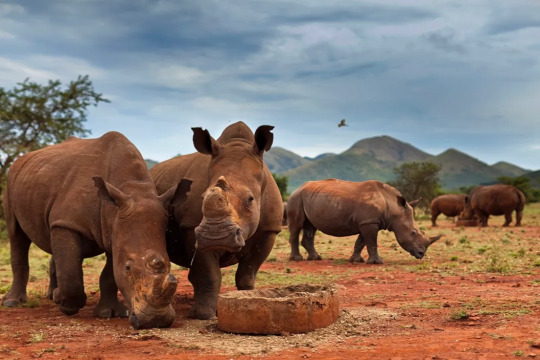
“The 2,000 rhinos - more than are currently found in any single wild location in Africa - represent around 12-15% of the continent’s remaining white rhino population. […] “Rhinos perform an important ecological function in the environment as a large grazing herbivore,” says Dale Wepener[….] “The protection of rhino is far more than just looking after rhino; other species that occur in the protected areas will benefit from the protection,” explains Jooste. “This will lead to an increase in diversity and result in much healthier ecosystems.”
2. Florida Corridor Buffers Effects of Climate Change on Wildlife — And People
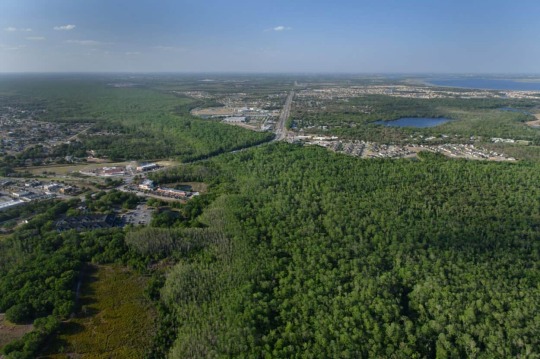
“A massive multi-partner effort that has conserved 10 million acres for wildlife in Florida over past decades will help buffer wildlife—and people—from the effects of climate change, a new report says. […] Protecting these corridors is important for wildlife genetics, demography and connectivity […], conducting prescribed fires in the corridor can reduce the risk of more intense wildfires [… and] they can provide buffers against hurricanes and seasonal thunderstorms.”
3. Global life expectancy to increase by nearly 5 years by 2050 despite geopolitical, metabolic, and environmental threats
“Increases are expected to be largest in countries where life expectancy is lower, contributing to a convergence of increased life expectancy across geographies. The trend is largely driven by public health measures that have prevented and improved survival rates from cardiovascular diseases, COVID-19, and a range of communicable, maternal, neonatal, and nutritional diseases (CMNNs).”
4. Valencia has Spain’s longest urban park

“Jardin del Turia (Turia Garden) is the green spine of the City of Valencia and Spain’s (and possibly Europe’s) longest urban park stretching for a length of 8.5 kilometres [… and] the current administration plans to make Jardin del Turia Europe’s largest city green space by extending it to the sea[….] Almost all Valencia residents (97 per cent) live within 300 metres of an urban green space. […] Jardin del Turia is a true urban oasis that provides exceptional thermal comfort, with a temperature difference of up to three degrees compared to other areas of the city.”
5. This Paint Could Clean Both Itself and the Air
“When an artificial ultraviolet light source shines on [photocatalytic] paint, the nanoparticles react with pollutants to make them break down—theoretically removing them from the nearby air and preventing a discoloring buildup. [… R]esearchers developed a new photocatalytic paint that they claim works using UV rays from ordinary sunlight, making its self-cleaning properties easier to activate. They’ve also shown that they can effectively produce this paint from recycled materials [including fallen leaves].”
6. Planting Seedlings for a Cooler Rockingham
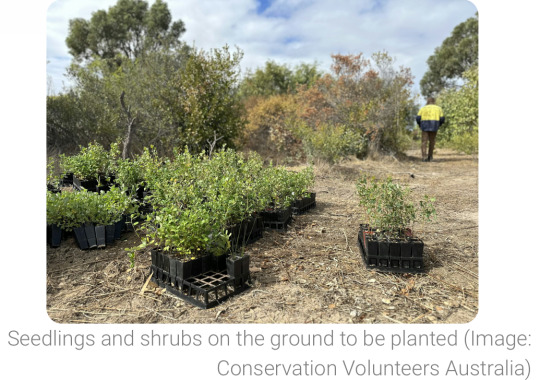
“A dedicated group of volunteers recently planted over a thousand native seedlings in Lewington Reserve [… and] re-established canopy cover to areas of the reserve to create cooling shade for the local community and provide homes for native wildlife. […] Planting lots of trees and shrubs in urban areas can help create shade and cool cities, mitigating the impacts of climate change, contributing to biodiversity conservation and building greener, more resilient communities.”
7. Sydney’s first dedicated affordable housing for trans women designed to deliver ‘positive outcomes’

“Community housing provider and charity Common Equity NSW, […] which is for people on very low to moderate incomes, prides itself on creating inclusive living and promotes the independence and well-being of people and communities […, and] will deliver the first-of-its-kind social housing in a bid to provide a safe place to live for transgender women seeking an affordable home.”
8. Rewilding: How a herd of bison reintroduced to Romania is helping ‘supercharge’ carbon removal
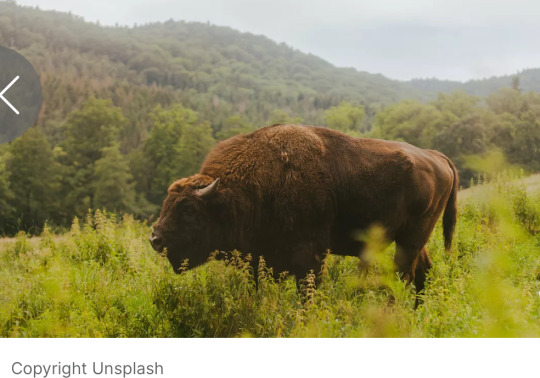
“170 European Bison reintroduced to Romania’s Țarcu mountains could help capture and store the carbon released by up to 84,000 average US petrol cars each year. […] By grazing a 48 square kilometre area of grassland in a wider landscape of 300 kilometres squared, they helped to capture an additional 54,000 tonnes of carbon each year. That is around 10 times the amount that would be captured by the ecosystem without the bison.”
9. World’s biggest grids could be powered by renewables, with little or no storage
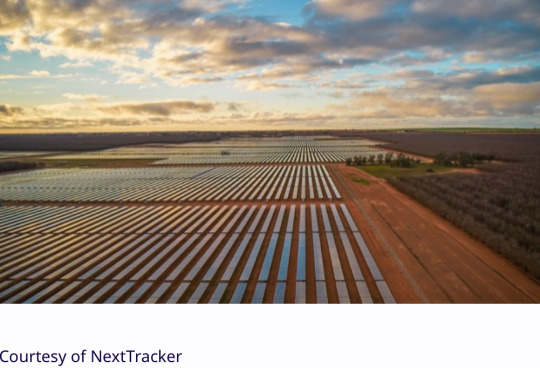
“[…] 100% renewable supply can then match the load by putting surplus electricity into two kinds of distributed storage worth that [an energy expert] says are worth buying anyway – ice-storage air-conditioning and smart bidirectional charging of electric cars, and recover that energy when needed, filling the last gaps with unobtrusively flexible demand.”
10. Supporting the Long-Term Survival of Copper River Salmon and Alaska Native Traditions
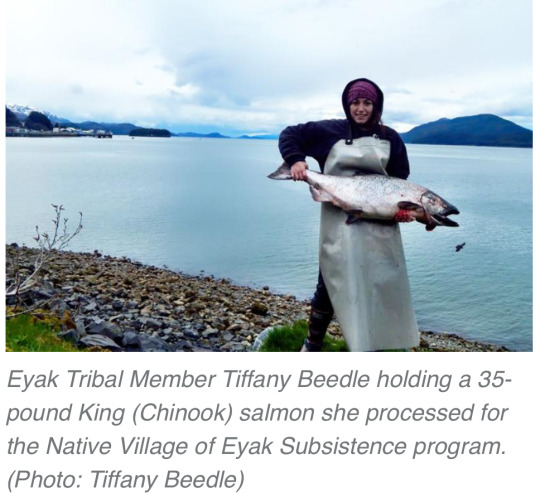
“With $4.3 million in NOAA funds, the Copper River Watershed Project and The Eyak Corporation will remove fish passage barriers, opening more streams for salmon spawning and subsistence fishing. [… As part of this effort, o]ld narrow culverts that constrict water flow will be replaced with “stream simulation” culverts wide enough to fit the full stream, including its banks. They are also deep to allow contractors to place stones and other material inside to mimic a natural stream bottom.”
May 8-14 news here | (all credit for images and written material can be found at the source linked; I don’t claim credit for anything but curating.)
#hopepunk#good news#rhino#white rhino#africa#conservation#rewilding#climate change#florida#wildlife#life expectancy#health#spain#green space#urban parks#recycling#trees#global warming#trans#affordable housing#australia#bison#romania#carbon#carbon capture#renewableenergy#reforestation#salmon#alaska native#nature
360 notes
·
View notes
Text

Evening, ladies
#🪴#im remaking this blog. if you havent noticed#i felt awkward making a big text post about it so im just keeping it condensed in the tags#but anyway all the tofupupper posts are over on @tofupupper as an archive#for anyone that wants it#im probably gonna be posting about animals and botany here.. bc its what i enjoy right now#i used to really enjoy tofupuppers content but things got rough during the pandemic#and i was in a bad place. and i was just constantly getting anons from people venting to me#or talking about their mental health and im just so bad at comforting and constantly seeing#people tell me they want to die and such on my fan blog for a shiba inu was just so stressful#even though i havent posted tofu content since 2021 i still got messages like that now and then. 700 messages in my askbox rn#but anyway#im better now and i hope everyone is too#and i will still be rbing donation posts at peoples request here#i just felt awkward rbing them to a blog i didnt use otherwise#so. yeah!. wildlife biology and plants now. maybe other stuff#you dont have to stick around if thats not your thing#goodbye for now
239 notes
·
View notes
Text
Posting this for Australians, mainly.
"In a country as vast as Australia, the public plays an important role too.
We’re being asked to immediately report any unusual bird deaths to the Emergency Animal Disease Hotline on 1800 675 888.
Health authorities have also warned against handling sick or dead birds."
#bird flu#avian influenza#h5n1#antarctica#australia#birds#wildlife#animals#environment#ecology#conservation#health
96 notes
·
View notes
Text
I highly recommend learning about local wildlife, learning to ID them and look for them when you're out and about. it makes me feel more in touch with the world around me and brings me joy when I successfully ID a new species I come across in daily life. Helps me be less human centric, dissociate less, more connected to the land around me. 10/10 experience!
I took a university class where I was taught how to do this, but you don't need to do that! Buy or borrow a couple field guides for local wildlife, check out nature centers and libraries and whatever else.
In the fall I'm going to take more classes like these and I'll get to look for trees and fish, amphibians and reptiles in addition to mammals and birds.
265 notes
·
View notes
Text
dont forget the innocent animals and wildlife of gaza. they’re dying and need help too and we should speak up more about them and help them and get aid to them.
all of the bombs and weapons are damaging the environment and nature a lot more aswell which also needs help.
permanent ceasefire now. free palestine. save the animals, the environment and the people. 🇵🇸
(pls reblog and boost to get the message out to more people bc this is extremely important /nf)
#palestine#free palestine#ceasefire#ceasefire now#free gaza#gaza strip#gaza#animals#save the animals#animal welfare#wildlife#animal#nature#free palestine 🇵🇸#from the river to the sea 🇵🇸#animal rescue#animal rights#for reach mainly#animal health#veterinary#animal science#important#pls reblog#pls repost#pls boost#signal boost#climate change#climate crisis#climate activism#climate action
86 notes
·
View notes
Text
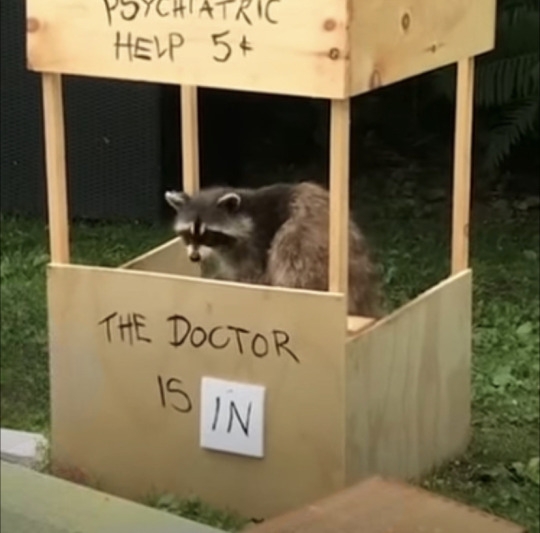
caption this
141 notes
·
View notes
Text
One of the toughest things I have to balance out as someone who is trained in and advocates for ecopsychology and ecotherapy is the use of the restorative properties of nature versus the impacts our time in nature can have on other living beings. There are scads of studies that support the many mental and physical benefits for us when we spend even a little time outdoors.
But I think this article (which you can read in full here) does raise some important points. Almost all wildlife are dealing with some level of habitat loss and fragmentation, and if sensitive species are being pushed out of what's left due to human presence, then that puts them at greater risk of extinction. There's still more research to do on this subject, of course, to include seeing which species are most heavily affected and which activities have the greatest negative impact. The results could help us to be more judicious in where and how we engage with the outdoors, especially in less populated areas.
I don't think we should just stop going to any place wilder than a city park. Part of how we ended up in our current situation with widespread ecological devastation is an increasing perceived separation from the rest of nature. The more time we spend in direct contact with other non-domesticated species, the more we learn about them and the more responsibility we feel toward them. And there's something very healing about the awe one experiences when seeing an elusive wild animal, even at a distance, or being immersed in a wild place that makes us feel we are a part of something so much greater than ourselves.
But we really do need to be paying attention to and asking questions about the side effects of our journeys into wilder nature, and then using that to help keep adjusting the balance between our needs and those of other living beings. I look forward to seeing more studies on this topic.
#hiking#outdoors#nature#wildlife#wilderness#ecopsychology#ecotherapy#nature therapy#mental health#ecology#animals#environment#conservation#environmentalism
62 notes
·
View notes
Text
“phobia safe” tick facts post
*LINKS* CONTAIN TICK PHOTOS, POST ITSELF DOES NOT!

Ticks are some of my favorite animals, but some species are a public health threat. It’s important to understand dangerous things, but also understand them as a part of nature, so this will be a little like my bug facts post for just ticks specifically. Links are provided as information sources but most will contain photographs of actual ticks, in case that isn’t something you want to see unexpectedly.
-----TICK SAFETY AND MYTH-BUSTING------
Ticks are arachnids. If it has six legs, antennae or wings, it is not a tick. A tick has a rounded body and eight obvious legs, with no other appendages.
Mites are their closest relatives. Many large mites can be mistaken for ticks, but will have differences in body shape and leg arrangement.
Know their shape. Even if just a photograph does make you squeamish, you will want to know what a tick looks like before you might go hiking or camping. Their flattened bodies are seed-like, their mouthparts stick out the front end in roughly a rectangle, and the eight legs are gently “curled” or “curved.” A tick never has sharply jointed legs like a spider or insect!
Ticks can be dangerous in two ways. some tick species actually produce venom that can cause paralysis, while others can be vectors for viruses, bacterial infections or protozoan parasites.
Ticks cannot transmit just any disease. A pathogen has to adapt specifically to take advantage of ticks as vectors, and are thus referred to as tick-borne illnesses. Here’s a list of them. A tick must also pick up a disease somewhere, so for instance, every individual lyme tick does not always harbor lyme disease!
Ticks don’t fly or jump, but wait in ambush. To find its next host, a tick goes “questing” (video) and will typically perch on foliage with its forelegs outstretched, especially grasses and dry shrubbery.
Taller grass doesn’t necessarily worsen tick populations. If there are ticks in your yard, you won’t reduce them by mowing more frequently. However, shorter grass makes it easier to avoid ticks, since taller grass gives them more vertical space to climb.

*Giemurou from Tensou Sentai Goseiger is, of all things, a tick-themed Kappa
Ticks are attracted to CO2. In another post I talked about how “dry ice” is sold in some places for camping coolers, but that it happens to attract ticks like mad. If it’s legal to purchase in your area, a little dry ice can even be used to attract and trap ticks in your own yard.
"Our” ticks attach firmly and must be removed carefully. The ticks that tend to attack humans are “hard ticks,” which feed long-term by embedding their mouthparts in the skin, where they may remain for several days.
DO NOT smother, burn or squeeze an attached tick. This can force the tick to regurgitate directly into the host’s blood stream, increasing the likelihood of infection. See the previous link for a graphic on safer removal.
If you remove an attached tick, take it to a doctor. Keep the tick as intact as possible in a tight container, and call a doctor or hospital as soon as you can. Many places can have a tick tested for infectious agents.
Watch out for their eggs, too. Tick eggs are tiny, sticky and laid in blobby clumps resembling fish roe!
Hard ticks swell after feeding. A flat tick is a tick that hasn’t bitten anyone yet. A round, bloated tick is a tick that has recently finished a blood meal, and sometimes a female that has gone on to mate and fill with eggs.
Ticks are NOT related to fleas. I’ve seen some people use the two interchangably. Fleas are actual insects, and dealing with them is a very different matter.
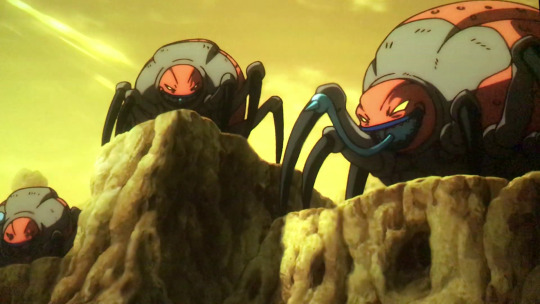
*What were dubbed as "vampa beetles” from Dragonball Super: Broly are actually giant ticks!
-------TICK BIOLOGY FACTS-------
I think I’ve covered everything you need to know about ticks for your physical well being, but I think it’s equally important to understand and respect dangerous wildlife as a part of nature, so the following is just for educational fun.
It’s not their fault they’re such a problem. As with so many other things, the threat of ticks has been greatly exacerbated by human recklessness. Deforestation and climate change have greatly expanded their range while a loss of natural predators has boosted their populations.
Sloths have special giant ticks. Many ticks find a sloth’s body inhospitable, but one of the largest on Earth feeds on sloths exclusively.
There are two major types of tick, but one just doesn’t bother with us. “Soft ticks” are named for their leathery appearance, and often look “headless” with their mouthparts underneath the body. Some species will bite humans and can transmit disease, but the majority of soft ticks target birds, bats or certain reptiles. These ticks also feed for only a few seconds or minutes at a time, rather than attaching to skin!
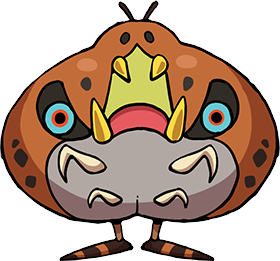
*“Daniel” the tick Yo-kai appeared in Yokai Watch 4! I am now almost out of pop culture ticks that don’t look like the real thing. That was fast :(
At least one known tick practices maternal care; it also “goes vegan” as it matures. Antricola marginatus is a soft tick found in bat caves, and as an adult, it switches from feeding on blood to eating bat droppings on the cave floor. However, since the young still require a blood meal to develop, the mother will regularly carry them all the way up the cave wall to feed on bats, wait for them to climb back onto her dish-shaped body, then return to the cave floor so she can eat more poop.
Ticks can be incredibly long lived without food. One researcher kept a small colony of soft ticks for 27 years without feeding them blood ever again. This only ended with his retirement from the lab; we still don’t know how much longer they might have survived.
Ticks invented their own unique sensory organs. The “haller’s organs” are a tiny pit in each of a tick’s front legs, which detect not only the CO2 produced by host animals but can measure surrounding temperature and humidity.
Ticks also have a “mystery” anatomical feature. In this microscopy photo of a tick’s mouthparts, you’ll see two porous depressions highlighted in pink. These are present only on female ticks, and we don’t know what they do.
A tick’s “head” and “body” are one big segment, sometimes with eyes. This is also in my general bug facts post! What people think is the “head” of the tick is just a capsule housing all the mouth parts. A tick is anatomically more like one big walking “head” and some species have a pair of little, well developed eyes on their sides.
Immature ticks have six legs. Eight legs aren’t really a requirement to be an arachnid, just the maximum number any true arachnid normally has. A new pair of legs develop with the tick’s first molt, shortly after its first blood meal.
Ticks can be beautifully patterned. Link goes to two rhinoceros ticks with amazing markings!
Ticks are a part of the nutrient cycle. You’ll often hear that a given creature is important as food for other animals, but it does go a bit deeper than that: by feeding on the blood of larger animals, ticks are “taking back” nutrients “locked away” in those animals, making them available again not only when the ticks are eaten by other predators, but even when the surviving ticks pass away and decompose! The total biomass of parasites like ticks is a constant supply of energy returning to the local food web each and every day.
Parasites in general guide evolution and shape ecosystems. Everything about a given animal is an adaptation to deal with its environment, and as parasites are present in all environments, they have an influence on every aspect of their host species. Ectoparasites like ticks drive the evolution of such behaviors as social grooming, mud-wallowing, mate selection, migration and even where or when an animal grazes.
The best tick control will always be natural predation. Anything that will eat small arthropods will eat a tick, and anything that will eat a tick-infested mammal is both directly eliminating ticks and regulating their long term blood sources. You may know that opossums eat ticks, but it’s probably not any more than any other omnivore or insectivore, and most important of all may be snakes!
988 notes
·
View notes
Text
Good News - June 1-7
Like these weekly compilations? Support me on Ko-fi or $Kaybarr1735! Also, if you tip me on Ko-fi or CashApp (and give me some way to contact you if it doesn’t automatically), at the end of the month I'll send you a link to all of the articles I found but didn't use each week!
1. Hundreds of Mayors, City Leaders Commit to Protecting Monarch Butterflies in Annual Pledge
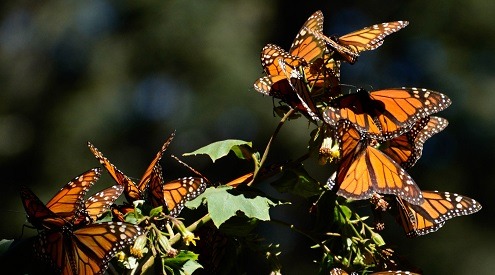
“The 300 participating communities are taking a record number of actions to advance monarch conservation by planting or maintaining pollinator gardens at prominent locations, supporting native plant sales and giveaways, and partnering with local gardening organizations and experts to advance monarch conservation and community engagement.”
2. Basic income can double global GDP while reducing carbon emissions, analysis suggests
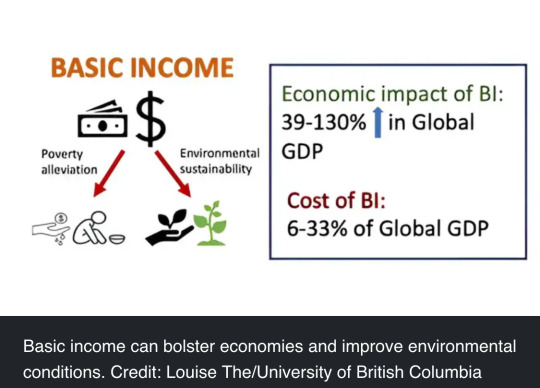
“Researchers suggest that charging carbon emitters with an emission tax could help fund such basic income programs while reducing environmental degradation. [… G]iving basic income to the entire world population could boost the global GDP by $163 trillion, which is about 130% of the current GDP. Every dollar spent on implementing basic income can generate as much as $7 in economic impacts, the analysis shows.”
3. Los Angeles-area wildlife crossing over freeway expected to be ready in 2026

“The crossing will be a vegetated overpass that will help isolated animals safely cross U.S. 101. […] Officials said the Wallis Annenberg Wildlife Crossing will "reconnect habitats and improve the health of the environment for many species in Southern California." They added that currently, U.S. 101 is a huge barrier that disconnects Southern California wildlife. […] “We need to move beyond mere conservation, toward a kind of environmental rejuvenation," [Annenberg] said in a statement. "Wildlife crossings are powerfully effective at doing just that — restoring ecosystems that have been fractured and disrupted.””
4. ‘Many waterfowl are very gay’: Elliot Page set to narrate LGBTQ+ animal documentary Second Nature

“According to Deadline, Second Nature will be executive produced by Page, who will also narrate the documentary set to explore instances of same-sex attraction in species other than humans. And, spoiler alert, they’re everywhere. [… Page said,] “Second Nature reveals the full spectrum of life and how when it comes to gender and sexuality in nature, the diversity is endless. I learned so much and am thrilled others will too.””
5. McKenzie River Restoration Benefiting Threatened Upper Willamette River Chinook

“Salmon have successfully reproduced at the Finn Rock restoration site in Oregon’s McKenzie River watershed. Another project aims to bring salmon back to lower Quartz Creek. […] Historical accounts document the presence of Chinook salmon and bull trout in Quartz Creek, but neither species has been seen there for decades. Project partners have replaced an aging bridge that constricted Quartz Creek. Previously, the stream constriction forced the water to gush like a fire hose, blasting salmon and sediment downriver. […] The restoration work will increase groundwater and expand the amount of wetlands, which can reduce the impact of forest fires.”
6. Leading Scholars Call for Global Treaty on Free Education

“According to the experts, well-established scientific evidence shows “unequivocally” that education is foundational to children’s healthy development and lifelong prospects[…. Seventy scholars from thirty countries] call on all governments to support a new optional protocol to the Convention on the Rights of the Child to ensure recognition of the right to free early childhood education and free secondary education, alongside the existing explicit right to free and compulsory primary education.”
7. Water is key as study shows restoration of drained tropical peat is possible
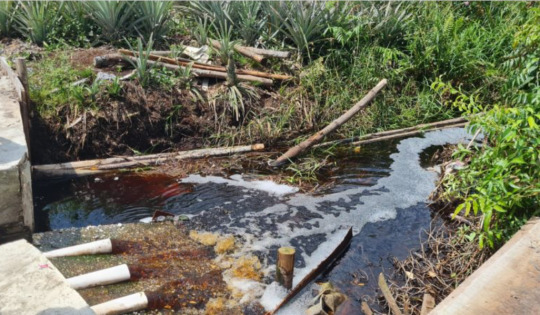
“Rewetting of tropical peatland that was drained for agriculture can lead to the recovery of the native ecosystem, a long-term study of a former pulpwood plantation in Indonesia shows. Researchers studying the 4,800-hectare (11,900-acre) plot that was retired in 2015 by Asia Pulp & Paper (APP) found the water table had risen, soil carbon emissions had gone down, and native trees were springing up and replacing the planted acacia pulpwoods.”
8. Antioxidant gel preserves islet function after pancreas removal: New approach could reduce diabetes complications

“Before surgeons remove the pancreas from patients with severe, painful chronic pancreatitis, they first harvest insulin-producing tissue clusters, called islets, and transplant them into the vasculature of the liver. […] Unfortunately, the process inadvertently destroys 50–80% of islets, and one-third of patients become diabetic after surgery. [… To] create a healthier microenvironment for the islets, the researchers adhered the islets to the omentum with an inherently antioxidant and anti-inflammatory biomaterial[…,] significantly improving survival and preserving function of transplanted islets.”
9. Restoring Indigenous aquaculture heals both ecosystems and communities in Hawai‘i

“The loko i’a system of native fishponds in Hawai‘i has for generations provided sustenance to Indigenous communities[….] Unlike commercial fish farms, loko i‘a thrive without feed input and need little management once established[….] “We are using science to translate ‘ike kupuna, or Indigenous knowledge, into policy,” said study co-author Kawika Winter […] “Loko i’a are really built to work with the ecosystem, whereas not all forms of aquaculture are made to do that.””
10. Meet Neo Px: the super plant that attacks air pollution

“Neo Px is a bioengineered plant capable of purifying indoor air at an unprecedented scale[….] "It's the equivalent of up to 30 regular houseplants in terms of air purification," said Lionel Mora, co-founder of startup Neoplants. "It will not only capture, but also remove and recycle, some of the most harmful pollutants you can find indoors." [… The plant comes] with packets of powder that contain a microbiome, essentially a bacterial strain. "This bacteria colonizes the plant's roots, soil and leaves [… and] absorbs the VOCs to grow and reproduce. The plant is there to create this ecosystem for the bacteria. So we have a symbiotic system between plants and bacteria.””
May 22-28 news here | (all credit for images and written material can be found at the source linked; I don’t claim credit for anything but curating.)
#hopepunk#good news#income inequality#basic income#los angeles#wildlife#habitat#elliot page#lgbtq#gay rights#nature#fish#salmon#river#california#agriculture#education#human rights#science#medicine#health#pancreatitis#diabetes#hawaii#monarch butterfly#butterfly#butterflies#butterfly migration#conservation#plants
14 notes
·
View notes
Text
Plankton, which includes zooplankton despite their microscopic size, play a primary role in the marine ecosystem and indirectly support human life - half the oxygen we breathe. Their contributions to oxygen production, food chain dynamics, and ocean color demonstrate how the smallest living organisms show the interconnectedness of life in the oceans and their essential role in earth’s health.

28 notes
·
View notes
Text
"Interaction with nonhuman species is an important but under-investigated source of child development and mental and physical health, and also plays a significant role in adult wellbeing."
—Michael S. Northcott, Place, Ecology and the Sacred: The Moral Geography of Sustainable Communities.
15 notes
·
View notes
Text
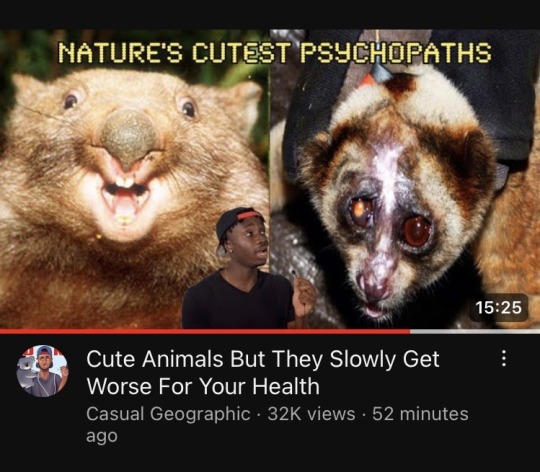
Here’s my personal recommendation of a YouTube video to check out:
youtube
#casual geographic#animal videos#animal#animals#cute animals#amazing animals#animalblr#interesting#health#wild animals#wildlife#animal video#educational videos#educational#educational content#animal lover#animal education#tumblr recommendations#recommend#recommendation#youtube#video recommendation#youtube link#youtube links#video links#video link
30 notes
·
View notes
Text


It’s not easy to swim 175 km (109 mi.) when you’re starving to death. It’s not easy either to try to survive when you’re shedding body weight at a rate of 1 kg (2.2 lbs.) a day.
And it might be hardest — or at least most tragic — of all if you’re a nursing mom and your calorie intake has dropped so low that you can no longer produce the milk you need to care for your young.
As a new paper in Nature Communications reveals, all of those challenges and more are facing the world’s polar bears, thanks to vanishing sea ice in our warming world, denying the animals a platform that they need to hunt for seals.
If the trend isn’t reversed soon, the estimated 26,000 polar bears in the wild could start to lose their hold on survival before the middle of this century.
The researchers were less interested in establishing the fact of the bears’ food plight; scientists are already aware of that problem.
What they were more focused on learning was both how gravely the nutritional loss is affecting the animals’ health and the alternative food sources they’re scrounging for on land.
To do their work, the scientists followed 20 different polar bears in Manitoba, Canada, from 2019 to 2022, fitting them with GPS trackers and video collars and periodically tranquilizing them and analyzing their blood, body mass, daily energy expenditure — basically a measure of calories coming in versus calories going out — and more.
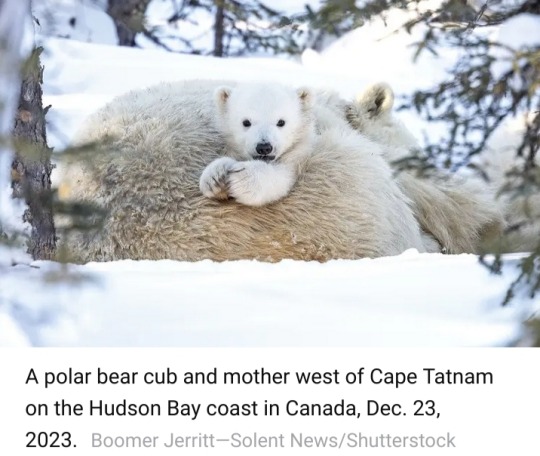
“The polar bears in Hudson Bay [Canada] are probably at the edge of the range at which they can survive right now,” says Anthony Pagano, a research biologist with the U.S. Geological Survey and the lead author of the paper.
“Most of the modeling work suggests that around 2050, they are going to be on land and away from their primary habitat [on the ice].”
The contraction in range of the Hudson Bay community is likely to be reflected in the ranges of the 18 other polar bear subpopulations scattered throughout the Arctic as well.
Across the arc of the study, the data Pagano and his colleagues gathered was troubling.
Weight loss varied from bear to bear, with the daily loss of 1 kg representing just an average.
Some of the subject animals dropped up to 1.7 kg (3.75 lbs) every 24 hours.
That may not seem like much when an adult male polar bear can tip the scales at 550 kg (1,200 lbs) and a female at 320 kg (700 lbs), but it can add up fast.
And with less available to eat, the hungry bears have to travel farther and farther distances to find their next meal.

The individual that swam 175 km — a young female — set the record among the bears studied, but another, older female also covered 120 km (75 mi).
The endurance swims in search of food are energy-intensive and often fruitless for the bears.
They are efficient hunters when they’ve got the purchase of ice beneath them, Pagano and his colleagues explain, but they are clumsy when they are going after seals and trying to swim at the same time.
That leaves them scavenging on land for foods they would not ordinarily eat — and getting little payoff for their efforts.
“Polar bears are feeding on ducks and geese — catching them when they’re flightless and molting — as well as on their eggs,” Pagano says.
Other foods on the desperate bears’ menus included berries and other vegetation, bones, antlers and, in one case, a beluga whale carcass.
None of that fare is as calorie-rich as a steady diet of live, blubber-packed seals.
Some of the bears vigorously sought out these alternative sources of nutrition; others opted for a different strategy: resting and conserving the energy contained in their body mass.
The latter approach costs stored calories, but so does the former, as all of the plodding and searching burns through energy too.
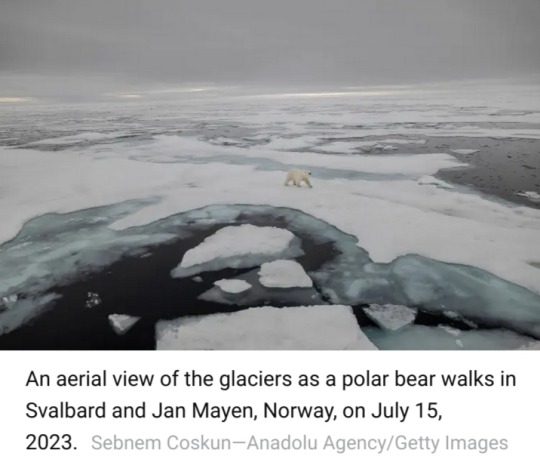
“The amount of body tissue they were burning to try and find those terrestrial foods was basically the same as what they’d get from eating those terrestrial foods,” Pagano says. “So there’s no actual benefit.”
The researchers were surprised to find that the bears were going through not just fat stores to compensate for the poor rations but lean muscle tissue too.
Pagano is not certain why their metabolisms would adopt that strategy, but he has some ideas.
“There's some thought that burning lean body mass might be more energetically efficient in some respects relative to burning body fats,” he says.
“Also, conserving their body fat might provide them better thermal regulation once the winter and the ice return.”
That seasonal freeze-over is shorter than it used to be — though not by a lot.

In the 1980s, polar bears were on land for about 110 days out of the year, with no need to eat terrestrial foods since the fat deposits they’d accumulate thanks to wintertime seal-hunting was enough to carry them the rest of the year.
Now they're off the ice for 130 days on average.
It’s a measure of the nutritional knife’s-edge on which the bears operate that just 20 days can make the difference between whether they live and thrive or starve and die.
The individuals most likely to perish when food supplies are poor are young adults — due to their less-developed hunting skills — and cubs, whose principal source of nutrition, their mother’s milk, can vanish in lean times.
“If females are fasting for extended periods, they will actually stop lactating,” says Pagano.
Full-grown bears are by no means immune to danger, however.
The authors cite earlier research predicting that the adult male population could decrease by 24% if the ice-free summer season increases to 180 days.
This is especially so given the enormous energy intake — about 22,500 calories per day — that the big males need to maintain their body weight.
Polar bears aren’t the only species menaced by these findings. Humans are in harm’s way too.
The more time bears spend off the ice and on land, the greater the likelihood they will wander into cities and towns in search of something to eat — and residents could easily be hurt or attacked if they get in the way of the hungry animals.
People might also even be seen as sources of prey.
“When polar bears are on land, they act like other bears and become omnivores,” says Pagano. “It does raise the potential for human-bear interactions.”
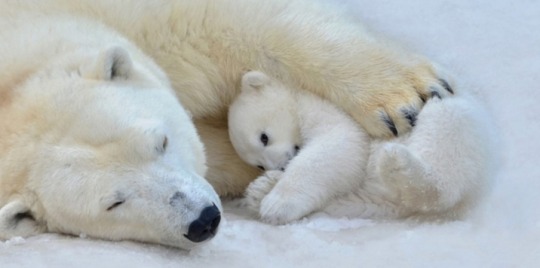

🆘🐻❄️🥺
#polar bears#sea bears#Ursus maritimus#U.S. Geological Survey#Manitoba#Canada#Nature Communications#climate change#wildlife conservation#food source#nutritional loss#animal health#marine mammals#Arctic Circle
10 notes
·
View notes
Text





An afternoon with deer friends ✨️
#deer#wildlife#white tailed deer#mother nature#nature#nature's beauty#photography#life#original photographers#mental health#my photos#virginia#rural america#rural appalachia#in the woods
6 notes
·
View notes